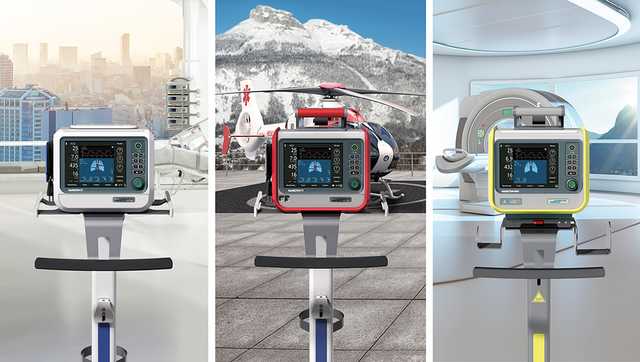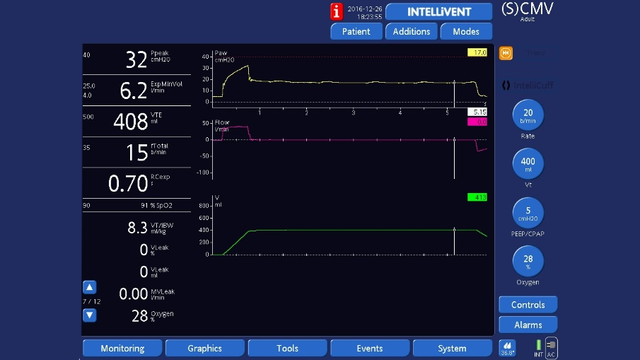
Autor: Simon Franz
Datum: 14.07.2017

Das Konzept eines „sicheren“ Plateaudrucks wird zwar bereits infrage gestellt, dennoch wird er standardmässig in der Versorgung zur Abstimmung einer lungenschonenden Beatmung bei Patienten mit akutem Atemnotsyndrom (ARDS) herangezogen
Aufgrund des ventilfreien pneumatischen Systems bei den Beatmungsgeräten HAMILTON-C1/T1/MR1 ist es nicht möglich, Pplateau mit der Durchführung eines inspiratorischen Hold-Manövers zu bestimmen. Pplateau steht aber weiterhin als überwachter Parameter zur Verfügung und kann je nach der Software auf dem Beatmungsgerät angezeigt werden.
| HAMILTON-C1/T1/MR1 SW-Version < 2.2.0 | HAMILTON-C1/T1/MR1 SW-Version ≥ 2.2.0 |
|---|---|
| Der endinspiratorische Druck wird immer als Pplateau angezeigt. Beachten Sie, dass bei vorhandenem endinspiratorischem Flow Pplateau höher als der tatsächliche Pplateau-Wert angezeigt wird. | Pplateau wird nur angezeigt, wenn der endinspiratorische Flow beinahe null ist. Der angezeigt Pplateau-Wert kann immer noch über dem tatsächlichen Pplateau liegen. |
Hier finden Sie eine mögliche Abhilfe für die Berechnung von Pplateau in Situationen, in denen der endinspiratorische Flow nicht beinahe null ist oder der gemessene endinspiratorische Druck nicht richtig zu sein scheint:
Diese Berechnung hängt von einer genauen Cstat-Messung ab; es gibt also keine signifikanten Patientenbemühungen. Pinsp sollte mindestens ~10 cmH2O betragen.
Pplateau = (VTE ml / Cstat ml/cmH2O) + PEEP cmH2O
Beispiel
VTE: 450 ml; Cstat: 50 ml/cmH2O; PEEP: 8 cmH2O
(450 ml / 50 ml/cmH2O) + 8 cmH2O = 17 cmH2O
Pplateau = 17 cmH2O
∆P = 9 cmH2O
Ein weiterer Vorteil ist, dass Sie als Nebenprodukt Ihrer Berechnungen ∆P erhalten. Der Parameter ∆P steht in engem Zusammenhang mit dem Überleben von ADRS-Patienten und dürfte somit von grösserem Interesse sein
Betroffene Geräte: HAMILTON-C1/T1/MR1 (alle Softwareversionen)

ARDS is characterized by lung collapse and consolidation leaving just a small portion of aerated lung remaining, which is at risk of ventilator-induced lung injuries (baby-lung concept).

Airway driving pressure is associated with clinical outcomes in ARDS, post-surgical, and normal-lung patients, and is a measure of the strain applied to the respiratory system and the risk of ventilator-induced lung injuries. Evidence suggests we should keep driving pressure below 14 cmH2O. But how can we measure it?